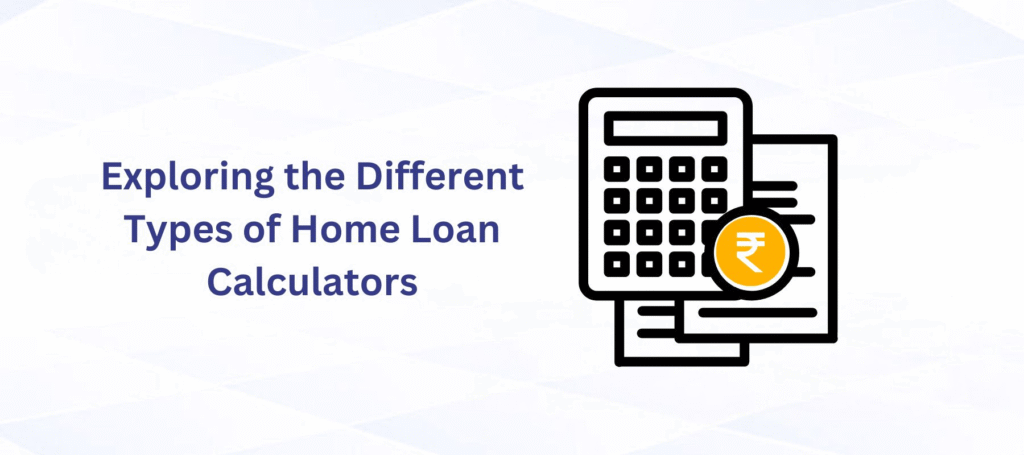When it comes to managing personal finances, understanding loans and their impact on your financial health is crucial. Whether you are planning to buy a home, purchase a car, or finance education, loans often play a significant role. But how do you make an informed decision about borrowing? Enter the loan calculator—a powerful, easy-to-use digital tool designed to help borrowers grasp the key details about their potential loans.
A loan calculator can provide insights into loan repayments, interest costs, and timelines, helping you make smarter borrowing choices. This article dives deep into what you can learn from using a loan calculator, the benefits it offers, and how it can guide your financial decisions.
Key Takeaways
- Loan calculators break down loan details into monthly payments, total interest, and loan term impacts.
- They allow users to compare different loan options and interest rates.
- Calculators help visualize amortization and the benefits of prepayments.
- Using a loan calculator aids in budgeting and avoiding over-borrowing.
- They provide estimates, not guarantees, so always verify details with lenders.
- Learning to use a loan calculator builds financial literacy and confidence in managing debt.
What Is a Loan Calculator?

A loan calculator is an online or software tool that allows users to input loan details—such as loan amount, interest rate, loan tenure (duration), and sometimes additional fees—to calculate monthly payments and total repayment amounts. It is commonly used for mortgages, car loans, personal loans, and student loans.
With just a few inputs, the calculator instantly generates results that reveal the financial commitment of borrowing under various scenarios.
What Can You Learn from Using a Loan Calculator
1. Monthly Payment Amounts
One of the primary learnings from using a loan calculator is understanding your monthly repayment amount. When considering a loan, knowing what you will have to pay each month is essential to ensure that the payments fit within your budget. Loan calculators break down the total loan amount plus interest into manageable monthly installments, helping you plan your finances.
2. Total Interest Payable
A loan calculator shows the total interest you will pay over the life of the loan. Interest is the extra amount charged by lenders as the cost of borrowing money. Seeing the total interest upfront allows you to compare different loan options and lenders to find the most affordable deal.
3. Loan Term Impact
The loan term or tenure—the length of time you take to repay the loan—directly affects both monthly payments and total interest. By adjusting the loan term in the calculator, you can see how shorter or longer repayment periods influence your finances. Shorter loans mean higher monthly payments but less interest, while longer loans lower monthly payments but increase total interest.
4. Effect of Interest Rate Changes
Interest rates fluctuate depending on market conditions and your creditworthiness. Loan calculators help you visualize how different interest rates impact your loan repayment amounts. This can motivate you to seek better rates or improve your credit score to qualify for lower interest.
5. Amortization Schedule Insights
Many advanced loan calculators provide an amortization schedule, which details how each monthly payment is split between interest and principal repayment over time. This helps you understand how your loan balance reduces and the timing of interest versus principal payments.
6. Prepayment Benefits
Loan calculators often allow you to simulate the impact of making extra payments or prepayments. You can see how paying more than the minimum monthly amount can shorten your loan tenure and reduce the total interest paid, helping you become debt-free faster.
7. Loan Affordability and Budgeting
By calculating potential loan payments before applying, you can determine if the loan is affordable. This helps prevent over-borrowing and financial strain. You can plan your monthly budget more accurately by incorporating loan repayments.
8. Comparison of Different Loan Products
If you are considering multiple loan options—such as fixed vs. variable interest rates or different lenders—you can use the calculator to compare costs side-by-side and select the best option.
9. Hidden Fees and Charges
Some loan calculators allow inputting additional fees like processing charges, insurance, or prepayment penalties, helping you understand the true cost of a loan beyond just interest.
10. Visual Understanding with Graphs
Many calculators offer visual aids such as graphs and charts showing loan amortization, payment schedules, or interest vs. principal portions. This visual representation makes complex financial information easier to grasp.
How Does a Loan Calculator Work?

A typical loan calculator uses the loan amortization formula: M=P×r(1+r)n(1+r)n−1M = P times frac{r(1+r)^n}{(1+r)^n – 1}M=P×(1+r)n−1r(1+r)n
Where:
- MMM = monthly payment
- PPP = loan principal (amount borrowed)
- rrr = monthly interest rate (annual rate divided by 12)
- nnn = total number of payments (loan tenure in months)
By plugging in the values, it computes the monthly installment. The calculator then multiplies this amount by the number of payments to find the total repayment and subtracts the principal to find the interest.
Real-Life Examples of Using a Loan Calculator
Example 1: Home Loan
Suppose you want to borrow $300,000 at an interest rate of 5% per annum over 30 years.
- Using a loan calculator, you find your monthly payment is approximately $1,610.
- The total repayment would be about $579,767.
- You will pay $279,767 in interest over 30 years.
Now, if you shorten the loan to 15 years, the monthly payment increases to around $2,372, but the total interest drops significantly to $126,953. This helps you decide based on your budget and long-term cost preferences.
Example 2: Car Loan
For a $25,000 car loan at 7% interest over 5 years:
- Monthly payment is about $495.
- Total repayment is $29,700.
- Interest paid is $4,700.
If you want to pay extra $100 monthly, the loan term shortens by 8 months, and interest reduces by $700.
Benefits of Using a Loan Calculator
- Quick Decision Making: Instantly get loan payment estimates without manual calculations.
- Better Financial Planning: Helps align loan repayments with income and expenses.
- Negotiation Tool: Armed with data, you can negotiate better loan terms with lenders.
- Avoid Over-Borrowing: Ensures loans remain manageable within your financial means.
- Transparency: Clear understanding of costs involved reduces surprises.
Limitations of Loan Calculators
While loan calculators are useful, be aware of their limitations:
- They rely on input data accuracy; incorrect inputs yield misleading results.
- They often exclude variable elements like taxes, insurance, or changing interest rates.
- They do not account for your personal credit profile, which affects loan approval and rates.
- They provide estimates, not guaranteed payment schedules.
Types of Loan Calculators and Their Specific Uses

Explain different loan calculator types, such as:
- Mortgage Calculators: Designed for home loans; often include property taxes, insurance, and PMI (private mortgage insurance).
- Auto Loan Calculators: Focus on shorter terms and may include trade-in values or down payments.
- Personal Loan Calculators: Simple installment loans without collateral, usually shorter tenures.
- Student Loan Calculators: Include grace periods, deferments, and income-based repayment plans.
- Business Loan Calculators: Account for irregular payment schedules, varying interest types.
What you learn: Understanding which calculator to use helps you get accurate and relevant estimates.
How to Interpret Loan Calculator Outputs
Dive into interpreting:
- Monthly payment breakdown: Principal vs interest.
- Total payment overview: How fees and interest add to principal.
- Amortization charts: What they mean for your repayment schedule.
- Effective interest rate vs nominal rate.
What you learn: How to translate numbers into meaningful financial knowledge.
Loan Calculator vs. Financial Advisor: When to Use Each
- Pros and cons of self-calculating vs professional advice.
- Situations where calculators suffice.
- Complex loan structures requiring expert consultation.
What you learn: When a calculator is enough and when you need a financial expert.
How Loan Calculators Can Help Improve Your Credit Score
- Using calculators to avoid over-borrowing.
- Planning repayments to prevent late payments.
- Simulation of different repayment strategies.
What you learn: Using calculators as part of credit management strategy.
Common Mistakes Borrowers Make Without Using a Loan Calculator
- Underestimating monthly payments.
- Ignoring the total interest burden.
- Not considering loan tenure impact.
- Overlooking prepayment options.
What you learn: Why calculators help avoid costly borrowing mistakes.
Technological Innovations in Loan Calculators
- AI-powered calculators that customize recommendations.
- Mobile apps with loan tracking.
- Integration with banking apps for real-time data.
- Using loan calculators combined with budgeting tools.
What you learn: The future of loan calculators and how tech enhances financial planning.
Loan Calculator Tools in Different Countries: Variations and Regulations

- How loan calculators differ internationally due to regulations.
- Impact of different interest calculation methods (simple vs compound).
- Local financial terms and additional costs.
What you learn: How regional differences affect loan calculations.
How to Use a Loan Calculator for Refinancing Decisions
- Comparing existing loan terms with new offers.
- Calculating savings from lower rates or different tenures.
- Considering fees and penalties in refinancing.
What you learn: Making refinancing decisions backed by solid numbers.
Loan Calculators and Their Role in Debt Consolidation Planning
- Estimating new consolidated loan payments.
- Understanding interest savings from consolidation.
- Balancing loan tenure with monthly affordability.
What you learn: Using calculators to evaluate debt consolidation benefits.
How Loan Calculators Help in Planning for Financial Goals
- Aligning loan payments with other goals like retirement, savings, or emergency funds.
- Using calculators to determine borrowing capacity.
- Managing multiple loans simultaneously.
What you learn: Integrating loans into holistic financial planning.
Detailed Step-by-Step Guide: How to Use a Loan Calculator Effectively
- Choosing the right calculator.
- Gathering accurate input data.
- Adjusting variables for scenario analysis.
- Interpreting and applying the results.
- Combining with other financial tools.
What you learn: Practical skills to maximize loan calculator benefits.
Real-Life Success Stories of Using Loan Calculators
- Profiles of individuals or families who saved money by using calculators.
- Stories of avoiding debt traps.
- Examples of optimal refinancing choices.
What you learn: Real-world proof of loan calculators’ value.
The Psychology Behind Loan Calculators: How Seeing the Numbers Affects Borrowing Behavior
- Behavioral finance insights.
- Impact of visualizing costs on decision-making.
- Reducing impulse borrowing with clear data.
What you learn: Why loan calculators promote better financial habits.
Loan Calculators for Businesses: Managing Commercial Loans

- Special features for business loans.
- Handling variable cash flow and irregular payments.
- Forecasting loan impact on business profitability.
What you learn: Using loan calculators beyond personal finance.
How to Customize Loan Calculators for Personal Use
- Using Excel or Google Sheets to build your own.
- Incorporating your financial assumptions.
- Tracking loan progress over time.
Also Read:- What Will a Payday Loan Really Cost You?
Conclusion
A loan calculator is a vital tool for anyone considering borrowing money. It empowers you with crucial financial insights — from monthly repayments and total interest to the impact of interest rates and loan tenure. By providing a clear picture of your loan obligations, it helps you plan your budget wisely, avoid financial stress, and make informed borrowing decisions.
While it doesn’t replace professional financial advice or lender consultations, a loan calculator is an accessible and free way to understand the numbers behind your loans. The more knowledge you have about your potential loans, the better your financial decisions will be.
FAQs
1. Are loan calculators accurate?
Loan calculators provide close estimates based on input data and formulas. However, actual loan terms may vary due to lender fees, credit checks, and rate fluctuations.
2. Can I use a loan calculator for any type of loan?
Most loan calculators are versatile for mortgages, personal loans, auto loans, and student loans, but specialized calculators may exist for specific loan types.
3. How do extra payments affect my loan?
Making extra payments reduces the loan principal faster, decreasing interest costs and shortening loan tenure.
4. What if interest rates change during the loan tenure?
Fixed-rate loans keep the rate constant, so payments remain stable. Variable-rate loans fluctuate with market rates, which loan calculators may not predict.
5. Can I factor in loan fees and charges in the calculator?
Some advanced calculators allow you to add fees; otherwise, you may need to calculate those separately.
6. How do I choose the best loan term?
It depends on your monthly affordability and willingness to pay more interest over time. Shorter terms save interest but increase payments.
7. Is it better to focus on monthly payments or total interest?
Both matter. Affordable monthly payments ensure you don’t default, while minimizing total interest saves money in the long run.



